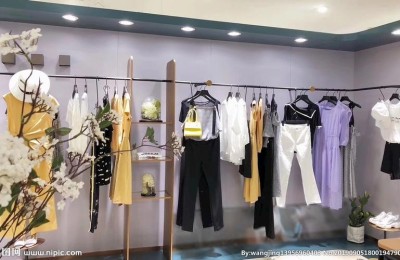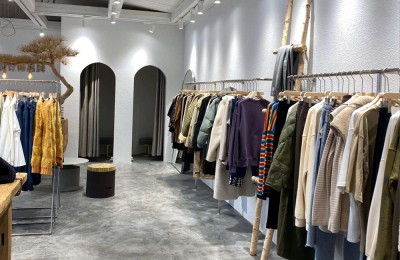Boosted by expectations that the international trade situation will improve, the PTA market ushered in a wave of strong operations on the 26th, causing an uproar in the polyester market. On the 26th and 27th, PTA futures continued to advance rapidly, and the main 1909 contract price continued to increase, reaching 3.89%, 4.11%, 5.02%, 2.79%, and even reached the daily limit at one point, setting a new two-month high. Subsequently, the good news spread to polyester filament and other products. On the 27th and 28th, the polyester filament market was bombarded with “rising voices”. It became a common phenomenon that the quotations of mainstream polyester manufacturers increased by 100-400 yuan/ton.
For the weaving market, The rising prices of upstream raw materials will more or less lead to a rebound in the market. It is understood that in the recent weaving market, conventional products that have been silent for some time, such as polyester taffeta, pongee, Oxford cloth and other products, have seen varying degrees of improvement in market transactions.
How is the recent fabric market situation? What is your attitude towards the price increase of raw materials? Overall, from the first half of the year, what is the performance of orders in the weaving market?
1. Stimulated by the strong surge in raw materials, weaving manufacturers have started purchasing
In the strong raw material market Stimulated by the impact of the epidemic, most weaving manufacturers have more or less made purchasing actions. This can also be seen from the aspect of production and sales. In recent days, the production and sales of the polyester market have continued to exceed 100%. As PTA futures rose sharply on the 26th, polyester production and sales experienced a small explosion. On that day, polyester production and sales rose to around 160%. On the 27th, they were still running at a high level near 120%.
In the early stage, weaving manufacturers were concerned about the fluctuations in raw material prices and their own funds and Due to various considerations such as inventory, speculation on stockpiling of raw materials has been reduced accordingly. With this wave of rising prices of raw materials, weaving manufacturers have once again started purchasing. According to statistics, the current stocking of raw materials by weaving manufacturers has increased to about 20-30 days. Compared with the previous 10-15 days, the growth is still relatively obvious.
“Recently, when the price of raw materials has increased, we have also made some purchases. Now it takes about 20-25 days to stock raw materials in the factory,” said Manager Weng of Wujiang Tongbao Textile Factory. “On the one hand, it is normal procurement. Demand, because some new looms were added last year, under normal demand, the operating rate is stable and the demand for raw materials is also relatively stable. On the other hand, we are afraid that the price of raw materials will rise in the future, so we prepare more raw materials in advance.”
Manager Shen of Suzhou Maiding Textile Co., Ltd. also feels the same way. With the price of raw materials rising in the past two weeks, some raw materials have been purchased. Now the raw material stocking in the factory is basically about 20 days, and some of them are bought up but not down. factors exist. But immediate demand is still the key. Previously, the factory did not have many raw materials in stock, only about 10 days, so now we are considering preparing more raw materials to prepare for emergencies.
2. The sales of elastic fabrics are relatively high Good, but profits have shrunk by nearly 5-10%
This year’s slowdown in the peak season for the textile market has become a fact that cannot be ignored. The market is indeed too “bland”, which has also given rise to a lot of negative emotions. However, economic development is bound to be cyclical, with ups and downs. Conventional products such as polyester taffeta, pongee, nylon, imitation silk, etc. all have high inventory pressures, slow sales, and severe shrinkage. However, although the sales of some mid-to-high-end fabrics such as wide-width home textile fabrics, T400, and high-elastic fabrics have decreased in the market, the overall trend remains stable.
As a manufacturer specializing in the production of four-way stretch fabrics, Wujiang Chuangfeng Textile added some new looms this year and now mainly produces 75D double-layer four-way stretch products. According to the company’s manager Xu, the weaving factory produces all four-sided elastic products, which are mainly sold to domestic foreign trade companies, and then exported to European and other countries and regions through foreign trade companies. Orders have basically remained stable in the first half of the year, and current orders on hand can basically last until August. However, in terms of product profits, due to the impact of lower raw material prices in the early stage, customers often lowered prices when placing orders, resulting in a corresponding decrease in profits.
Manager Weng of Tongbao Textile also said that the sales of elastic products this year performed better than other products, and orders in the first half of the year were basically able to maintain the level of the same period last year. 80-90% of their company’s looms focus on the production of elastic fabrics, mainly white fabrics for domestic sales. In addition to normal procurement needs, some traders stock up in advance. However, the overall profit has indeed been compressed, with a year-on-year decrease of nearly 5-10%.
3. Does the fluctuation of raw material prices play a supporting role or increase costs?
As for this wave of rising raw material prices, it has a two-sided effect on the weaving market. On the one hand, it supports the price of fabric products to a certain extent, and on the other hand, it increases in disguise. Production costs of weaving manufacturers. Weaving manufacturers have their own opinions based on their own factors.
Jinkang Textile offers conventional four-way stretch, nylon four-way stretch, high-elastic series, and cationic four-way stretchThe company’s manager Wu said that orders have been relatively stable this year, but there are no queues like the previous two years. Although four-sided bombs are relatively popular, the market competition is fierce now, and the product price has been affected to a certain extent. As the price of raw materials increases, the price of fabrics will inevitably fluctuate with the raw materials. Even if the price of fabric orders will not increase immediately, it can at least play a supporting role.
Manager Yu from Suzhou Changrong Textile Technology has a different view on this. She said that the overall market situation in the first half of this year was average, and the peak season was particularly short, resulting in fierce competition. The weaving mills are now under greater pressure. Under inventory pressure, there are still concerns about the market outlook. In addition, short-term changes in raw materials are not reflected in fabric prices, and it is difficult for downstream companies to digest this increase; and when fabric orders are not saturated, in order to maintain orders, companies have to digest counter-offers from customers, further compressing the situation. Profit margins for fabric companies.
Generally speaking, this wave of rising raw materials may be more upstream. The result of market speculation, but it has indeed given a “calming agent” to the weaving market. The key to how the weaving market will change in the second half of the year is the market environment, fluctuations in peripheral production capacity, and the company’s own positioning. Textile enterprises are working hard to be professional, precise and practical. I believe that the “peak season” favors those who are prepared! </p







